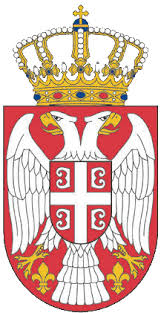The Kingdom of Serbs, Croats, and Slovenes was formed in 1918; its name was changed to Yugoslavia in 1929. Communist Partisans resisted the Axis occupation and division of Yugoslavia from 1941 to 1945 and fought nationalist opponents and collaborators as well. The military and political movement headed by Josip Broz "TITO" (Partisans) took full control of Yugoslavia when their domestic rivals and the occupiers were defeated in 1945. Although communists, TITO and his successors (Tito died in 1980) managed to steer their own path between the Warsaw Pact nations and the West for the next four and a half decades. In 1989, Slobodan MILOSEVIC became president of the Republic of Serbia and his ultranationalist calls for Serbian domination led to the violent breakup of Yugoslavia along ethnic lines. In 1991, Croatia, Slovenia, and Macedonia declared independence, followed by Bosnia in 1992. The remaining republics of Serbia and Montenegro declared a new Federal Republic of Yugoslavia (FRY) in April 1992 and under MILOSEVIC's leadership, Serbia led various military campaigns to unite ethnic Serbs in neighboring republics into a "Greater Serbia." These actions ultimately failed and, after international intervention, led to the signing of the Dayton Peace Accords in 1995.
MILOSEVIC retained control over Serbia and eventually became president of the FRY in 1997. In 1998, an ethnic Albanian insurgency in the formerly autonomous Serbian province of Kosovo provoked a Serbian counterinsurgency campaign that resulted in massacres and massive expulsions of ethnic Albanians living in Kosovo. The MILOSEVIC government's rejection of a proposed international settlement led to NATO's bombing of Serbia in the spring of 1999. Serbian military and police forces withdrew from Kosovo in June 1999, and the UN Security Council authorized an interim UN administration and a NATO-led security force in Kosovo. FRY elections in late 2000 led to the ouster of MILOSEVIC and the installation of democratic government. In 2003, the FRY became the State Union of Serbia and Montenegro, a loose federation of the two republics. Widespread violence predominantly targeting ethnic Serbs in Kosovo in March 2004 led to more intense calls to address Kosovo's status, and the UN began facilitating status talks in 2006. In June 2006, Montenegro seceded from the federation and declared itself an independent nation. Serbia subsequently gave notice that it was the successor state to the union of Serbia and Montenegro.
In February 2008, after nearly two years of inconclusive negotiations, Kosovo declared itself independent of Serbia - an action Serbia refuses to recognize. At Serbia's request, the UN General Assembly (UNGA) in October 2008 sought an advisory opinion from the International Court of Justice (ICJ) on whether Kosovo's unilateral declaration of independence was in accordance with international law. In a ruling considered unfavorable to Serbia, the ICJ issued an advisory opinion in July 2010 stating that international law did not prohibit declarations of independence. In late 2010, Serbia agreed to an EU-drafted UNGA Resolution acknowledging the ICJ's decision and calling for a new round of talks between Serbia and Kosovo, this time on practical issues rather than Kosovo's status. Serbia and Kosovo signed the first agreement of principles governing the normalization of relations between the two countries in April 2013 and are in the process of implementing its provisions. Prime Minister Aleksandar VUCIC, has promoted an ambitious goal of Serbia joining the EU by 2020. Under his leadership, in January 2014 Serbia opened formal negotiations for accession.
Serbia is a parliamentary republic.
Source: CIA World Factbook
Members:
Resources
Displaying 1 - 5 of 6Constitution of Serbia 2006
The National Assembly promulgated the constitution after adopting it and after it was approved in a national referendum.
Regulation geographical zoning of vineyard production areas of Serbia.
This Regulation hereby determines the boundaries and official names of the wine-growing geographical areas (including the classification of allowed and recommended varieties for specific viticultural areas), maximum yields for these viticultural areas, and other characteristics related to the production of grapes and wine in viticultural areas on the territory of the Republic of Serbia.The Annex is an integral part of this Regulation.
Implements: Law on Wine. (2009)
Law establishing the public interest and the special procedures of expropriation and the issuance of the construction permit for the project "Belgrade on water."
This Law regulates and defines the establishment of public interest for expropriation and construction of the real estate property for the project "Belgrade on water", as a project of special importance for the Republic of Serbia and the City of Belgrade, also determining the parties and special expropriation rules, the procedure and method for the issuance of building permits and other documents necessary in the construction process, and valid land and area planning documentation.
Law on the elimination of consequences of floods in the Republic of Serbia.
This Law regulates the elimination of consequences of floods or landslides in the area affected by the floods in the Republic of Serbia (occurred in May 2014).The areas affected by the floods, according to this Law, includes flooded and landslide affected parts of the territory of the Republic of Serbia, various municipalities, towns and the city of Belgrade.This Law further sets the powers and duties of the Commission aimed to determine the damage caused by natural disasters.The Law is divided into V Chapters and 46 articles, including the monitoring and data collection provisions.
Law on concessions .
This Law provides all necessary conditions, standards, manner and procedures for: granting concessions for the use of natural resources, goods for general use, performance of certain activities of common interest; defining the object of the concession, duration of the concession, concession agreement, concessionary fees and charges, realization of concession rights and obligations; establishment and operation of the authorized concession company, and other issues of importance for the realization of the concessions on the territory of the Serbian Republic.The Law is divided into 10 Chapters



